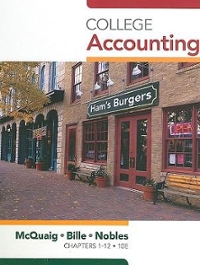Question
BUSINESS INCOME 1. Sandra started up her own business a couple of years ago. It has been tough getting it going. In fact, she has
BUSINESS INCOME
1. Sandra started up her own business a couple of years ago. It has been tough getting it going. In fact, she has incurred a loss each year so far (i.e. her expenses have been greater than her income) and has claimed this business loss on her personal tax return.
a) If the CRA were to question the losses that she has claimed, Sandra would need to demonstrate that there was a "reasonable expectation of profit". How could she show this? In other words, what factors would be considered by the CRA?
b) If the CRA were to determine that there was NOT a reasonable expectation of profit, what would the result be?
2. Several years ago, Steve purchased a large piece of machinery for use in his business. He was not allowed to claim the entire $24,000 purchase amount as an expense in the year he purchased it. Instead he had to claim a portion of it each year.
a) Steve claimed $2,400 as an expense in the first year, and $4,800 per year after that. These amounts are referred to as the ___________________________.
b) After claiming $2,400 in the first year, $21,600 of the original purchase price was remaining to be claimed as an expense. This $21,600 is referred to as the _____________________________________.
c) When there was still $12,000 (of the original $24,000 purchase price) remaining to be claimed as an expense, Steve sold the machinery for $15,000. This created a negative balance of $3,000 in the asset class. This negative amount, called _______________, had to be included in Steve's income.
d) When there was still $12,000 (of the original $24,000 purchase price) remaining to be claimed as an expense, if Steve had instead sold the machinery for $10,000 there would have been a positive balance of $2,000 remaining in the asset class. This positive amount, called ______________________, would be claimed by Steve as an additional expense since it represents an amount from the original purchase price that was still unclaimed as an expense at the time the asset was sold.
Step by Step Solution
There are 3 Steps involved in it
Step: 1

Get Instant Access to Expert-Tailored Solutions
See step-by-step solutions with expert insights and AI powered tools for academic success
Step: 2

Step: 3

Ace Your Homework with AI
Get the answers you need in no time with our AI-driven, step-by-step assistance
Get Started


